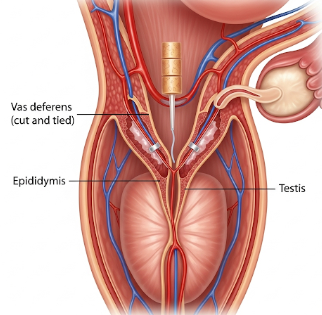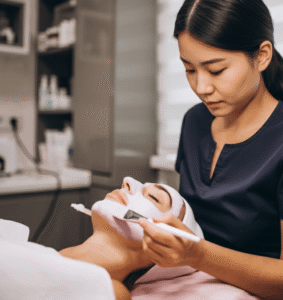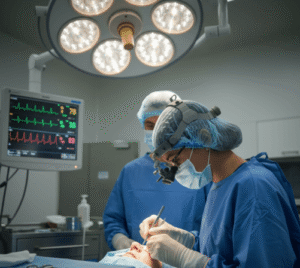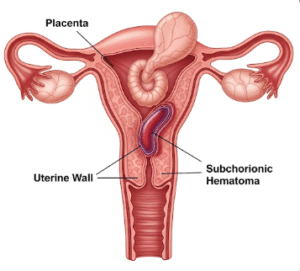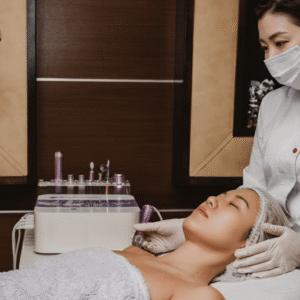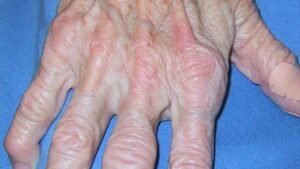Overview
A bilateral vasectomy is a minor surgical procedure performed for permanent male contraception. It involves cutting or sealing both vas deferens—the tubes that carry sperm from the testicles to the urethra—thereby preventing sperm from being present in the ejaculate.
Bilateral vasectomy is considered one of the most effective contraceptive methods, with a success rate exceeding 99%. It is performed as an outpatient procedure and does not affect testosterone production, sexual function, or ejaculation volume.
South Korea is a leading destination for vasectomy procedures due to highly skilled urologists, sterile and modern operating facilities, and meticulous follow-up protocols. Patients benefit from minimal pain, quick recovery, and a discreet surgical process.
What is Bilateral Vasectomy?
A bilateral vasectomy involves cutting or blocking the vas deferens on both sides, effectively preventing sperm from reaching the ejaculate.
Procedure types include:
- ➤ Conventional vasectomy: Small incisions made on the scrotum to access and cut the vas deferens
- ➤ No-scalpel vasectomy (NSV): Uses a tiny puncture instead of incisions, reducing bleeding and recovery time
- ➤ Vas clip or cauterization methods: Additional techniques to seal the vas deferens
Key points:
- Procedure is minimally invasive and quick (typically 15–30 minutes)
- Does not affect hormone production or sexual desire
- Permanent contraception—reversal is possible but not guaranteed
What are the Benefits?
✔ Highly effective permanent contraception (>99%)
✔ Minimally invasive with quick recovery
✔ No effect on sexual performance or hormone levels
✔ Outpatient procedure with minimal downtime
✔ Low complication rate when performed by experienced urologists
✔ Korean hospitals provide precise, sterile techniques and modern instruments
Additional benefits include:
- ➤ Reduces need for long-term contraception methods (pills, condoms)
- ➤ Can be performed under local anesthesia, reducing procedural risk
- ➤ Discreet and private procedure, suitable for international patients seeking privacy
Procedure Details:
1) How should I prepare for Bilateral Vasectomy?
- ● Preoperative evaluation: Physical examination and medical history review
- ● Lab tests: Blood tests to ensure suitability for anesthesia or procedure
- ● Medication adjustments: Blood thinners or anticoagulants may need temporary pause
- ● Hygiene: Scrotum should be cleaned and shaved if advised
- ● Fasting: Usually not required for local anesthesia; needed if sedation is used
- ● Korean hospitals: Provide clear preoperative instructions, multilingual support, and counseling for patients
2) What happens during the procedure Bilateral Vasectomy?
- ➤ Anesthesia: Local anesthesia is administered to numb the scrotal area
- ➤ Access to vas deferens:
- Conventional vasectomy: Small incisions made on each side of the scrotum
- No-scalpel vasectomy: Tiny puncture with specialized instrument
- ➤ Vas deferens is cut or blocked:
- Ends may be tied, cauterized, or clipped
- ➤ Closure: Incisions are closed with absorbable sutures or left to heal naturally in NSV
- ➤ Duration: Typically 15–30 minutes
- ➤ Korean advantage: Highly trained urologists use precise, minimally invasive techniques to minimize bleeding, pain, and risk of complications
3) What happens after a Bilateral Vasectomy?
- ● Recovery: Most patients return home the same day
- ● Pain and swelling: Mild discomfort, bruising, or swelling for a few days
- ● Activity: Rest recommended for 1–2 days; avoid heavy lifting or sexual activity for 1 week
- ● Follow-up:
- Sperm count checked after 8–12 weeks to confirm azoospermia
- Additional contraception used until sperm-free ejaculate confirmed
- ● Korean hospitals: Offer structured follow-up, counseling, and guidance for azoospermia testing
Risks / Benefits
✔ Benefits:
- ✦ Permanent contraception without hormonal intervention
- ✦ Minimally invasive outpatient procedure
- ✦ Low risk of complications when performed by skilled urologists
- ✦ No effect on sexual function, testosterone, or ejaculation volume
⚠ Possible Risks (rare):
- ➔ Minor pain, bruising, or swelling
- ➔ Infection at incision site
- ➔ Hematoma (blood collection) in the scrotum
- ➔ Persistent testicular discomfort (very rare)
- ➔ Rare failure leading to unintended pregnancy
- ➔ Reversal surgery possible but not guaranteed
Recovery and Outlook
- ➤ Immediate recovery: Rest for 24–48 hours; apply ice packs to reduce swelling
- ➤ Pain management: Over-the-counter pain relievers usually sufficient
- ➤ Activity: Light activity next day; strenuous exercise after 1 week
- ➤ Sexual activity: Resume after 1 week, but continue other contraception until sperm-free ejaculate confirmed
- ➤ Long-term outlook: Very high satisfaction; azoospermia confirmed in 8–12 weeks
- ➤ Korean advantage: Hospitals follow strict protocols for follow-up sperm testing and patient education to ensure safety and effectiveness
When To Call the Doctor
Contact a doctor immediately if you notice:
- ⚠ Severe or increasing pain
- ⚠ Swelling or redness indicating infection
- ⚠ Fever or chills
- ⚠ Persistent bleeding or hematoma
- ⚠ Any signs of allergic reaction to medications or anesthesia
Best Korea Option / Process
South Korea is a top destination for bilateral vasectomy due to:
- 🌟 Highly skilled urologists specializing in minimally invasive male contraception
- 🌟 State-of-the-art surgical instruments for NSV and conventional vasectomy
- 🌟 Quick outpatient procedures with minimal downtime
- 🌟 Comprehensive follow-up including azoospermia testing
- 🌟 Multilingual patient support for international visitors seeking privacy and discreet care
Top Korean Hospitals for Bilateral Vasectomy:
- ✅ Seoul National University Hospital (Urology Dept.)
- ✅ Asan Medical Center
- ✅ Samsung Medical Center
- ✅ Severance Hospital (Yonsei University)
- ✅ Bundang CHA Hospital (Advanced Urology Center)
✅ Quick Highlights Recap
- ➤ Permanent male contraception by cutting or blocking both vas deferens
- ➤ Minimally invasive, outpatient-friendly, and highly effective
- ➤ Low risk of complications; sexual function unaffected
- ➤ Follow-up includes sperm count to confirm effectiveness
- ➤ Korean hospitals provide skilled urologists, precise techniques, and structured care

